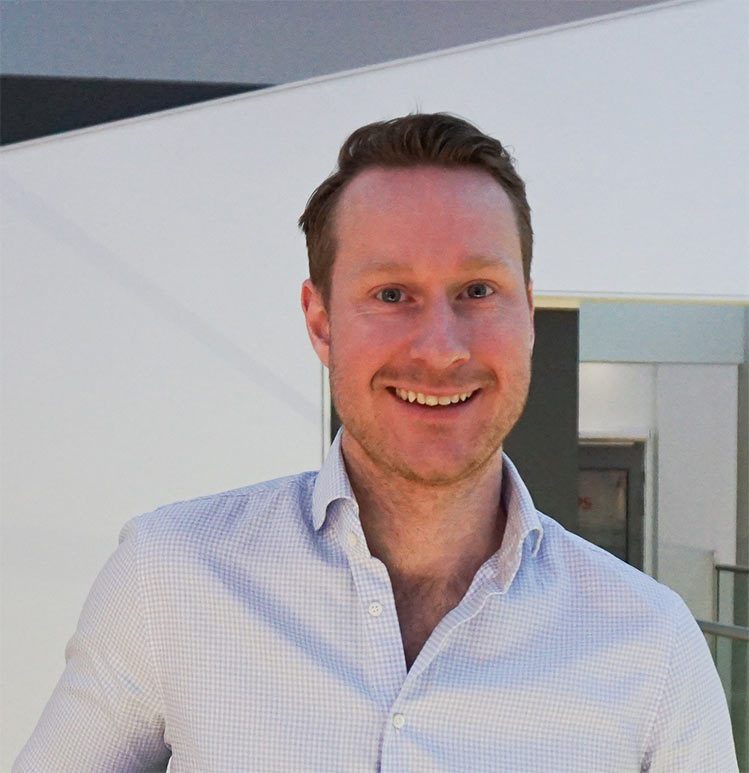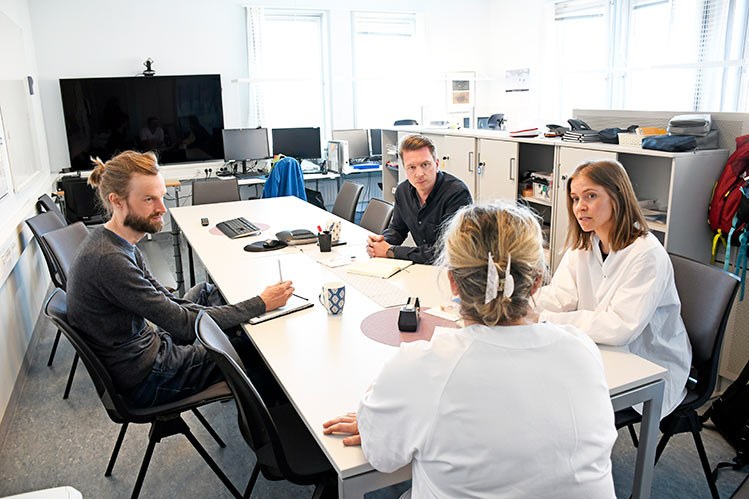Shadowing success project to revolutionize the patient record
When elderly patients with multiple illnesses receive coordinated healthcare services from a team, 43% of them live longer than those who receive regular healthcare services. IT company Aidn shadows how the team works and develops a patient record that is based on the patient - not the health service.

- We are a partner in Dignity Care because, like this research project, we want to develop a completely new way of thinking about patient records, explains Morten Moe Gjendemsjø. He leads the initiative in Aidn, which is one of the companies in the Kernel Group. Aidn is thus a "sister" of DIPS and DIPS Front, which for decades have delivered patient records to hospitals and municipalities respectively.
Dignity Care is a 100 percent match with what we at Aidn want to achieve. Our vision is that health services are coordinated and that patients receive a coherent service. We believe that the municipal health system of the future puts the patient at the center. Aidn will therefore create a patient-centric municipal solution, where the entire health service works with the patient's plan across the board. This means we're not creating a new record for the municipality, we're creating the patient's record with the municipal health service as one of the users," Gjendemsjø explains.

Shadows PACT
In the process, Aidn has sent developers and designers to the University Hospital of North Norway (UNN). UNN and the municipalities of Tromsø and Harstad started developing patient-centered teams (PACT) back in 2013. They wanted to better coordinate their resources around patients with complex diseases and long-term health service needs.
PACT starts with the health need that the patient defines as the most important to solve in order to have a good life. The team then works to ensure that the health service works holistically and preventively around the patient to achieve the goal. The result is less serious illness and fewer emergency hospital admissions.
PACT is the example that both the previous and current health ministers cite when they talk about the "health service of the future". Research shows that as many as 43 percent of patients live longer when they are treated according to PSHT principles, compared to those who receive uncoordinated and therefore standard healthcare services.
- If PACT had been a medicine, it would have been considered unethical not to give it to everyone immediately, says Professor Gro Rosvold Berntsen, who is the project manager for Dignity Care. She has previously researched the methods and results of PACT.
- PACT has managed to renew the work processes around their patients, but after 10 years, they still have no digital support in what they do. The closest they have come to a shared digital system is that they have two PCs standing next to each other: One with access to the hospital's patient record and one with access to the municipal one, explains Berntsen.

Design-driven development
- One of the most important things we as a company can work to achieve is collaboration across services and different professional roles. We need to ensure that the different roles see the same overall picture of the patient and can work towards a common goal. Only then can we avoid services sitting in 'silos' and working in a piecemeal and divided way," says Åshild Drønen Herdlevær, a service designer at Aidn. She is one of the people who has analyzed PACT and the various processes they have going on around a patient to find out how this should be supported digitally.
- Our thinking is as follows: If we manage to create a system that works for the complex patients, we will also solve the simple ones, says Herdlevær.
The method Aidn uses is called design-driven development. This means that they start with the people who will be using the tools and study their work processes to see what they need and how digital solutions can simplify everyday work. They then create a simple prototype of a solution early on, which users can test and provide feedback on. The prototype is tested and updated until it becomes a finished product.
- Procurement in the health service today is either described in terms of the tools we already have, or as a picture of the future that we're not quite sure what it will look like. At Aidn, we are privileged because we have owners and investors who believe in this market, and because we get to work closely with healthcare professionals who see how the healthcare service could ideally work, Gjendemsjø explains.
Ten municipalities have so far signed innovation agreements with the company. These are testing the Aidn prototypes in treatment situations with real patients.

Risked working against each other
- Municipalities normally divide their services into different departments. They usually have an allocation office that grants patients services such as physiotherapy, home care and digital home monitoring. But even though all the services use the same medical record system, they all create their own treatment plan for the patient and have different focus areas. Some focus on nutrition, some on medicine, some on hygiene. The plans are not coordinated, even though the services are provided by the same municipality. This means that one service can, in practice, break down another service's measures without knowing it! We want to create a system where all the services can see the goals that the patient has, and that they can then help each other to achieve those goals. Now we risk doing the opposite," explains Morten Moe Gjendemsjø.
In recent years, a number of good digital solutions for the health service have been developed through various research and innovation projects. But often the solution stops when the project is over and never becomes a new product for the health service.
- Why is this the case?
- For an innovation that actually has an impact on the health service to become a finished solution that is put into production, the solution must be part of the product strategy and match what the industry itself intends to do. Innovation and research must go hand in hand with the industry's goals, Gjendemsjø explains.
He believes that Dignity Care's desire to create a digital standard for interdisciplinary collaboration is "spot on" with what they are trying to do in Aidn.
- By partnering with Dignity Care, we hope to benefit from the insights gained from the research project and that they will research the application of our solution, says Gjendemsjø.